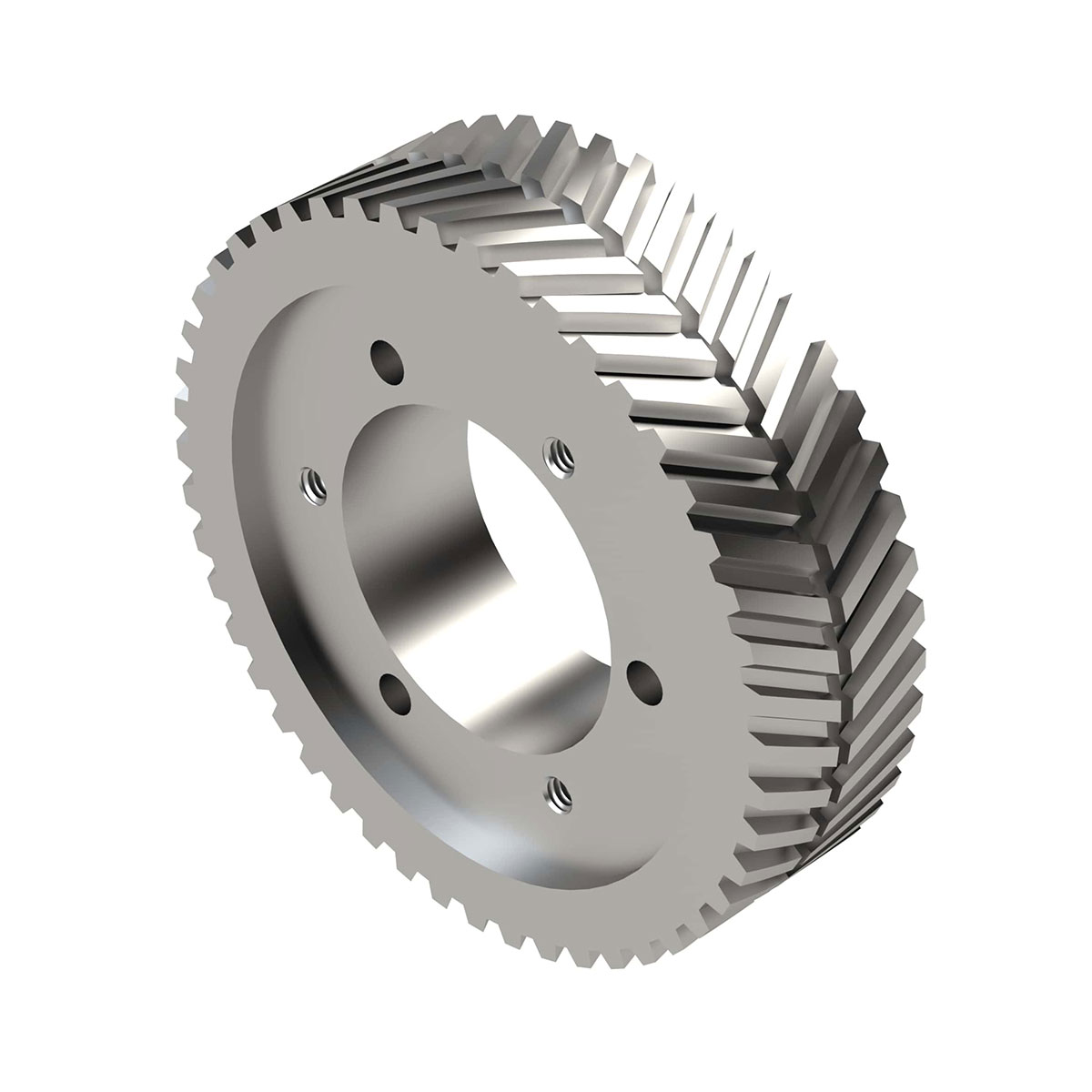Herringbone Gear
Herringbone gear is a name given to a special design helical gears, also known as double helical gears. It takes its name from the fact that the helical directions of the teeth on it resemble the bone shape of a forage fish. Herringbone gear manufacturing is generally done by bringing two helical gears back to back. In this way, the axial loads on the teeth balance each other and do not create an axial load on the shaft. Herringbone gears are generally preferred for transferring large radial loads. Sergeant gear manufacturing, also known as herringbone gear manufacturing, is a well-known and specialized gear production method.
The main differences between helical gears and Herringbone gears are:
Tooth direction: In helical gears, the helical direction of the teeth changes the direction of the force applied to the gear. In Herringbone gears, since the teeth are brought back to back, the helix direction effect is eliminated.
Axial load: Herringbone gears ensure that the axial loads applied to the teeth balance each other. Therefore, they do not create axial load on the shaft. Although helical gears do not provide axial load balance, they are used to transfer large radial loads.
Manufacturing and expertise: Herringbone gear manufacturing is also known as double helical gear manufacturing and requires more expertise than standard helical gears. Because producing herringbone gears correctly and bringing the teeth back to back requires a delicate process.
Given these differences, helical gears are generally more commonly used, while herringbone gears are preferred for special applications or situations with specific load-carrying requirements.
| Min | Max | |
| Module | 24 | |
| Diameter | 2000 |
